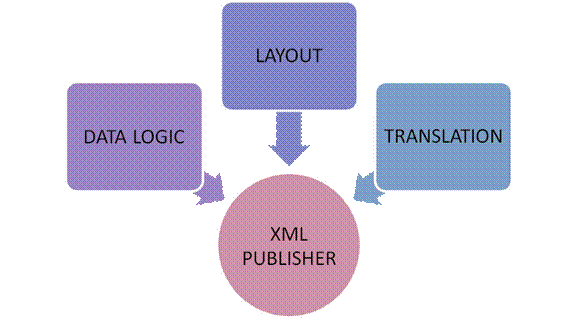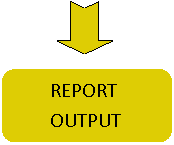A Comprehensive Guide to Oracle XML and BI Publisher with Oracle Apps
 Gautam Jain
Gautam JainTable of contents
- Introduction
- Why use a Publisher?
- Installation and Setup
- Creating Data Definitions in Oracle Apps
- Designing Report Templates
- Uploading and Managing Templates in Oracle Apps
- Running and Scheduling Reports
- Advanced Features
- Integrating BI Publisher with Oracle Applications Framework (OAF)
- Troubleshooting and Best Practices
- Conclusion
- Important Links

Oracle XML Publisher, now known as Oracle Business Intelligence Publisher (BI Publisher), is a powerful tool for creating, managing, and delivering reports and documents from various data sources. When integrated with Oracle Applications (Oracle Apps), it provides a robust solution for enterprise reporting. This guide will walk you through the detailed process of using Oracle XML and BI Publisher with Oracle Apps, from installation to report generation.
Introduction
Oracle BI Publisher is a template-based reporting solution that separates data extraction from report layout. This allows users to design report templates using familiar desktop tools like Microsoft Word, Excel, and Adobe Acrobat, while the data extraction is handled by the BI Publisher engine.
Why use a Publisher?
why to use a publisher as opposed to legacy oracle reports?
Consider the following scenarios:-
We have a RDF report with tabular layout which prints in English
New Requirements:
User1 wants the same Report needs to be printed in Spanish
User2 wants the Same Report needs to be printed in chart format
User3 wants the Same Report output in Excel
User4 wants the Same Report output to be published on intranet or internet
User5 wants the Same Report output eliminating few columns and adding few other
A new RDF needs to be created for each requirement stated above or an existing RDF needs to be modified with huge amount of effort but whereas with XML Publisher it can be done very easily.
XML Publisher separates a reports data, layout and translation components into three manageable pieces at design time; at runtime all the three pieces are brought back together by XML Publisher to generate the final formatted, translated outputs like PDF, HTML, XLS and RTF. In future, if any there is any change in layout we just need to add/modify the Layout file


Data Logic: Data extracted from database and converted into an XML string.
Layout: The layout templates to be used for the final output are stored and managed in the Template Manager.
Translation: The translation handler will manage the translation that is required at runtime
Installation and Setup
To get started, you need to install the BI Publisher Desktop, which includes the Template Builder for Word.
Steps:
Download and Install BI Publisher Desktop:
Go to the Oracle website and download the BI Publisher Desktop installer.
Run the installer and follow the on-screen instructions to complete the installation.
Configure BI Publisher:
Open Microsoft Word and you should see the BI Publisher tab.
Configure the connection to your Oracle database or other data sources.
Creating Data Definitions in Oracle Apps
Data definitions describe the structure of the data that will be used in your reports.
Steps:
Create a Data Definition:
Log in to the Oracle E-Business Suite (EBS).
Navigate to the XML Publisher Administrator responsibility.
Create a new Data Definition and register it with the appropriate application.
Generate Sample XML Data:
Use the Concurrent Manager to run the data definition and generate a sample XML file.
This XML file will be used to design the report template.
Designing Report Templates
Templates define the layout and formatting of your reports.
Steps:
Create an RTF Template:
Open Microsoft Word and use the BI Publisher Template Builder to load the sample XML data.
Design the report layout using Word’s formatting tools and BI Publisher’s form fields.
Insert Data Fields:
- Use the Insert menu in the Template Builder to add data fields, tables, charts, and other elements to your template.
Save the Template:
- Save the template as an RTF file.
Uploading and Managing Templates in Oracle Apps
Once your template is ready, you need to upload it to the BI Publisher server.
Steps:
Upload the Template:
Log in to the Oracle EBS.
Navigate to the XML Publisher Administrator responsibility.
Use the Template Manager to upload your RTF template.
Associate the Template with a Data Definition:
- Link the uploaded template to the corresponding data definition.
Running and Scheduling Reports
You can now run and schedule reports using your templates.
Steps:
Run a Report:
Navigate to the Concurrent Requests section in Oracle EBS.
Submit a new request and select the report and template you want to use.
Schedule a Report:
- Use the scheduling options to set up recurring report generation and delivery.
Advanced Features
BI Publisher offers several advanced features, including bursting, which allows you to split a single report into multiple documents based on specific criteria.
Steps:
Set Up Bursting:
Define bursting criteria in your data model.
Configure the delivery options for each burst segment.
Run Bursting Reports:
- Execute the bursting report to generate and distribute the segmented documents.
Integrating BI Publisher with Oracle Applications Framework (OAF)
For more advanced integrations, you can use BI Publisher with Oracle Applications Framework (OAF).
Steps:
Design an OAF Page:
Use Oracle JDeveloper to create a new OAF project.
Design the OAF page to generate XML data for the report.
Generate XML Data:
Create a custom View Object (VO) to fetch the required data.
Use the VO to generate XML data for the BI Publisher report.
Process the Template:
Troubleshooting and Best Practices
Common Issues:
Ensure that your data definitions and templates are correctly linked.
Verify that the BI Publisher Desktop is properly installed and configured.
Best Practices:
Regularly update your BI Publisher software to the latest version.
Use clear and consistent naming conventions for data definitions and templates.
Conclusion
Oracle XML and BI Publisher provide a robust solution for creating and managing reports within Oracle Apps. By following the steps outlined in this guide, you can leverage the full capabilities of BI Publisher to generate professional and dynamic reports.
Important Links
Developing XML Publisher Reports using Data Template
For more detailed tutorials and examples, you can refer to the official Oracle documentation
Subscribe to my newsletter
Read articles from Gautam Jain directly inside your inbox. Subscribe to the newsletter, and don't miss out.
Written by
Gautam Jain
Gautam Jain
Hi Guys, my name is Gautam Jain and I have been fascinated by the wondrous aspects of technology ever since i was a kid, and after getting my personal computer after 12th standard my interest sky-rocketed. I was so amazed by the cool operations one can perform using such small machine like a laptop and a phone. I begin to dive deep into the concepts of the computer science and to get more proficient in the field, enrolled for a Computer Science undergraduate degree. I graduated with my bachelors degree from GNDEC, Ludhiana in august 2023. Throughout my course of 4 years, I invested in developing a good understanding core computer science concepts like discrete mathematics, Data Structures and Algorithms, Operating systems, Database management, CAM, Cyber Security, Compiler Design etc. Along with my academics, i also invested in developing my problem solving skills by actively indulging in competitive tournaments on platforms like GeeksforGeeks, Leetcode, Code studio, Hacker rank, Code chef and also made a routine of solving daily problem and challenges. I worked together with my team (college friends and work colleagues) to create innovative, scalable and open-source projects and gained experience in software development by working as student SDE intern at E-Cell, TNP Cell and 11 mantras. I am currently working as a Programmer Analyst trainee in Cognizant Technology Solutions, brushing my skills in technologies' like Oracle Apps, Oracle SQL, Oracle PL/SQL, Java, JSP, JDBC, Spring etc. I am always open to opportunities to further polish my skills and get a insight to how the daily world functions with the help of technology. Actively Looking for open technology and project idea discussions.